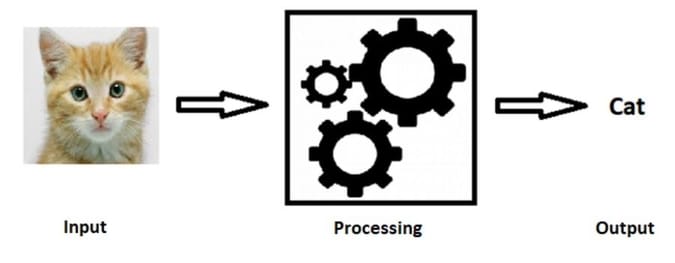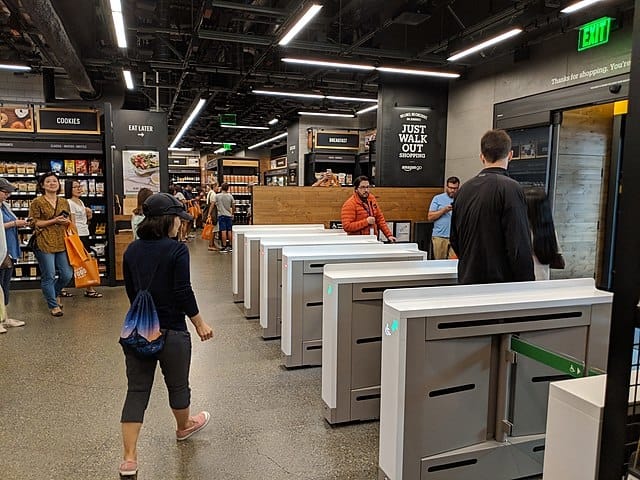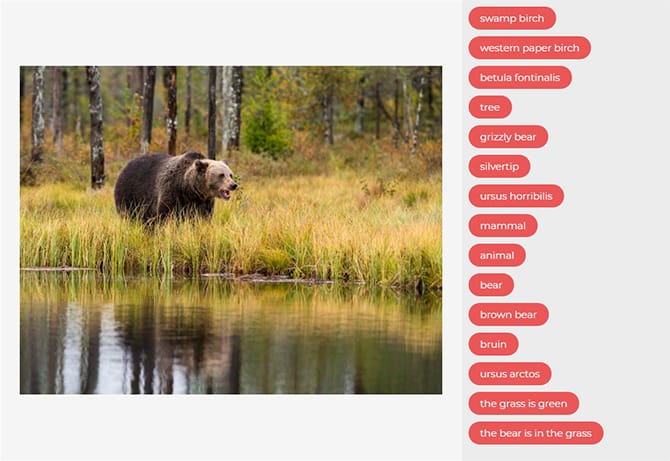By Jeffrey Goldsmith, VP of Marketing at Chooch.
AI may have been vilified countless times in sci-fi movies – think 2001 A Space Odyssey – but that hasn’t stopped the advancements in the technology. Now, businesses are finally seeing the advantages of having a machine do the tasks usually done by humans, but with more accuracy and consistency.
The spotlight shines brightest on computer vision, a branch of AI technology that deals with visual recognition. People believe that a machine equipped with Visual AI can do any visual task that requires human-like capabilities.
But what is computer vision exactly, and how is it used in today’s society?
What is Computer Vision?
Computer Vision is a subcategory of AI technology that deals with enabling machines to see, evaluate, and understand an image the way a human does. Cameras act as the eye that feeds the images to the system. The computer then uses an algorithm to identify the object sent to its library appropriately.
Computer vision technology uses the concept of a Convolution Neural Network (CNN) which mimics the way the brain develops the biological neural network. As more and more pictures are fed into the system, the stronger the relationship between the input and the output gets; the system obtains more reference to confirm its analysis, leading to more accurate results in identifying objects.

Fig. 1. Process workflow of computer vision
(Source: Oracle)
What makes Visual AI a standout is its reliance on the data sets that users provide to improve the system. The images uploaded are considered by the system to be the absolute truth. It doesn’t make predictions using data and statistics, unlike in other AI technologies.
The algorithm used in computer vision is designed to identify, label, categorize, and archive images to make the system better. On the other hand, other forms of AI require massive amounts of data to predict a limited number of possibilities that may (or may not) occur in the future using current factual data.
The practicality of computer vision makes it easier to adopt by organizations that need to automate their everyday processes. Various industries are already enjoying its benefits, and many are getting excited at the possibilities the tech can bring in the future.
Applications of Computer Vision
The use of computer vision has expanded into an array of fields, and its capacity to serve more is continually being explored. So far, here are the areas renowned for taking advantage of Visual AI technology.
1) Retail
Amazon Go has pioneered a revolution in the retail industry by coming up with a store where customers can come and go without having to go through cashier counters.

Fig. 2. Amazon Go store
(Source: Wikipedia)
Using computer vision, cameras can identify the customers who enter and exit the premise through facial recognition. Without human intervention, the network of cameras can identify the items customers place on their baskets and automatically compute the total cost. As customers exit the store, they’re billed on their Amazon accounts and the receipt is sent to them through email.
The frictionless transaction is made possible with the help of Visual AI which covers both retail and security functions of the store. Other retailers are encouraged to experiment with improving their retail experience using Amazon Go as an example.
2) Healthcare
Computer vision is currently being used in diagnosing diseases by analyzing images from CT scans and other medical imaging devices. Visual AI systems can identify cancerous tumors and other maladies human radiologists might miss without fail. These applications can help avoid late detection of fatal diseases and encourage early treatment.
3) Security
Probably the most widespread use of computer vision is in the area of security implementation. Biometric analysis, such as fingerprint, facial, and retinal scanning, uses computer vision to identify individuals entering the premises accurately.
Some facilities utilize the deep learning algorithms embedded in computer vision systems to help identify personnel allowed to access specific areas. High-confidentiality workplaces need the highest level of security to identify intruders not registered in its database immediately.
Facial recognition systems are also used in crowded places to identify high-value targets blending in public places. These people pose a high risk to their surroundings which is why immediate apprehension is a must.
Visual AI systems can also be used to detect harmful objects or abnormalities found in the environment. Cameras with live feed can be programmed to identify people carrying firearms and other dangerous objects.
Visual AI can also determine suspicious movement patterns based on the historical data that defines what normal behavior should look like. Cameras with thermal sensors can also detect irregularities in the heat emitted by an object, immediately alerting security personnel of a possible threat in the facility.
4) Manufacturing
As part of the quality inspection of finished products, they have to pass through a series of cameras connected to a machine running a Visual AI software. Computer vision provides manufacturing with anomaly detection, so defects and inconsistencies are immediately identified by the system, enabling manufacturers to separate substandard products from being released to the market.
Traditionally, quality assurance of items is done manually by human inspectors down the line. However, fatigue and stress can affect their performance, which can lead to lapses in judgment. By placing an automated system powered by computer vision, objectivity and consistency in qualifying finished products are enforced, multiplying productivity while reducing operational costs.
5) Transportation
Real-time processing of large amounts of data is critical in making on-road decisions that will ensure the safety of the passengers.
Autonomous vehicles use Visual AI to determine obstacles, road signs, environmental features, people, and other vehicles near them. Automated navigation would be impossible if not for the sensors and the computer vision technology that can immediately process the state of the surroundings.
6) Insurance
Visual AI systems are now being used by several insurance companies in assessing damages done to a property through the use of photos. This hastens the inspection process which usually takes several days to weeks to come up with a decision. With automated systems, insurance assessments will only take minutes after uploading the images.
7) E-commerce and social media
One of the most popular uses of computer vision is image captioning. Facebook, Instagram, Pinterest, and other popular social media platforms and applications use algorithms that identify and tag objects, animals, or humans, found in the photo.
Image captioning is useful for businesses that need to extract textual information from images.

Fig. 3. Auto image tagging
(Source: Chooch)
For instance, e-commerce websites use several photos for marketing an item for sale. Customers will search for tags or keywords that describe the item they’re looking for. Forgetting to put the most commonly searched keywords can result in missed opportunities to make a sale.
Manually putting keywords relevant to each image is not only time-consuming but also costly to the business. With the help of computer vision technology like Chooch Visual AI, clients can save time from manually tagging each item on their website.
Applications of computer vision have already spread into various industries as more organizations find ways to automate repetitive processes traditionally done through manual labor. Businesses are also getting creative in thinking of ways to make use of Visual AI for marketing their brands and improving customer experience.
Future of Computer Vision
AI technology is developing at a rapid pace. Things that people used to see only in sci-fi movies are becoming part of reality. Developments in deep learning techniques and advancements in graphics processing have made it possible for computers to think more like humans.
The level of progress computer vision has surpassed those of the other subsets of AI technology. The developments in Visual AI technology are aligned with what software designers want to have, and this has encouraged quicker adoption among developers.
The availability of software featuring computer vision has democratized AI technology, enabling more people to tap into its vast potential. As time goes by, Visual AI will become more affordable and accessible to the public. Even now, startups are gaining access to computer vision technology through AI as a Service (AIaaS) providers like Chooch.
Conclusion
Computer vision can be applied anywhere the expertise of human vision is required: anything that needs identification of an object or a pattern can benefit from the technology. Visual AI is leading the democratization of AIaaS through its practicality and versatility. Experts believe AI use will become commonplace both for commercial and household use within the years to come.
Why wait for the future when you can get a hold of a reliable Visual AI tech right this moment?
Chooch offers Visual AI products that can be purposed according to your business needs. Numerous companies are already using our products, and they’re enjoying the benefits of automated processes and reduced operational costs.
About the Author:

Jeffrey Goldsmith, VP of Marketing at Chooch
We’re more than willing to provide you with a demo of what our technology can do at Chooch.